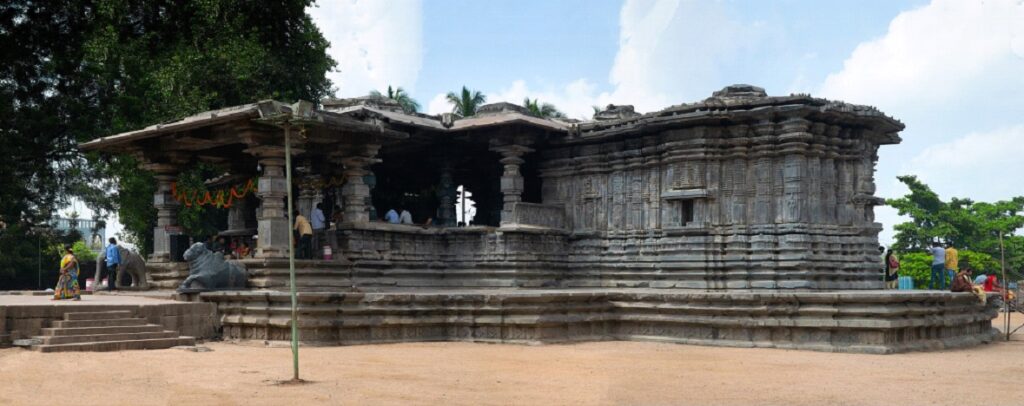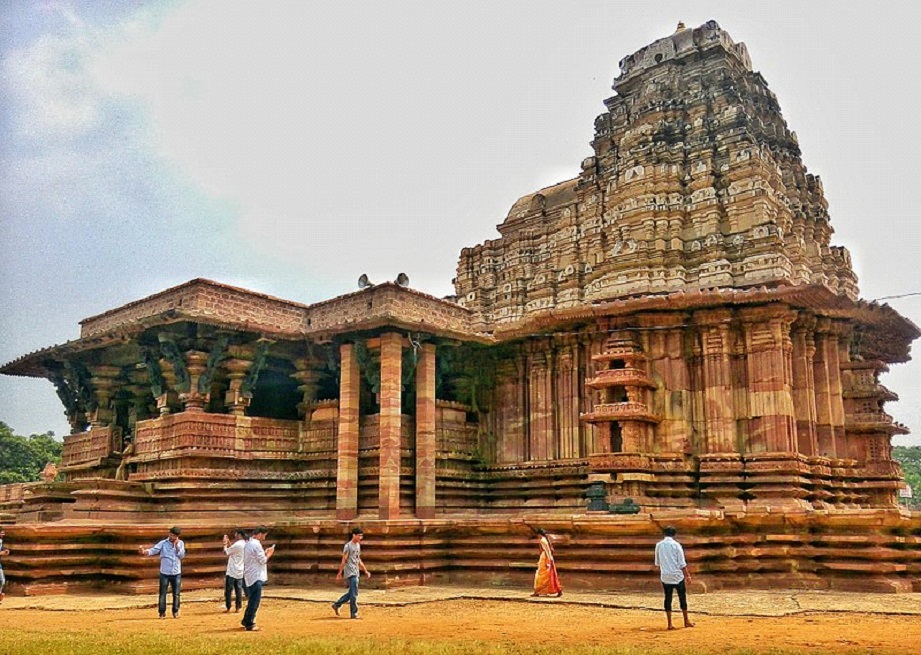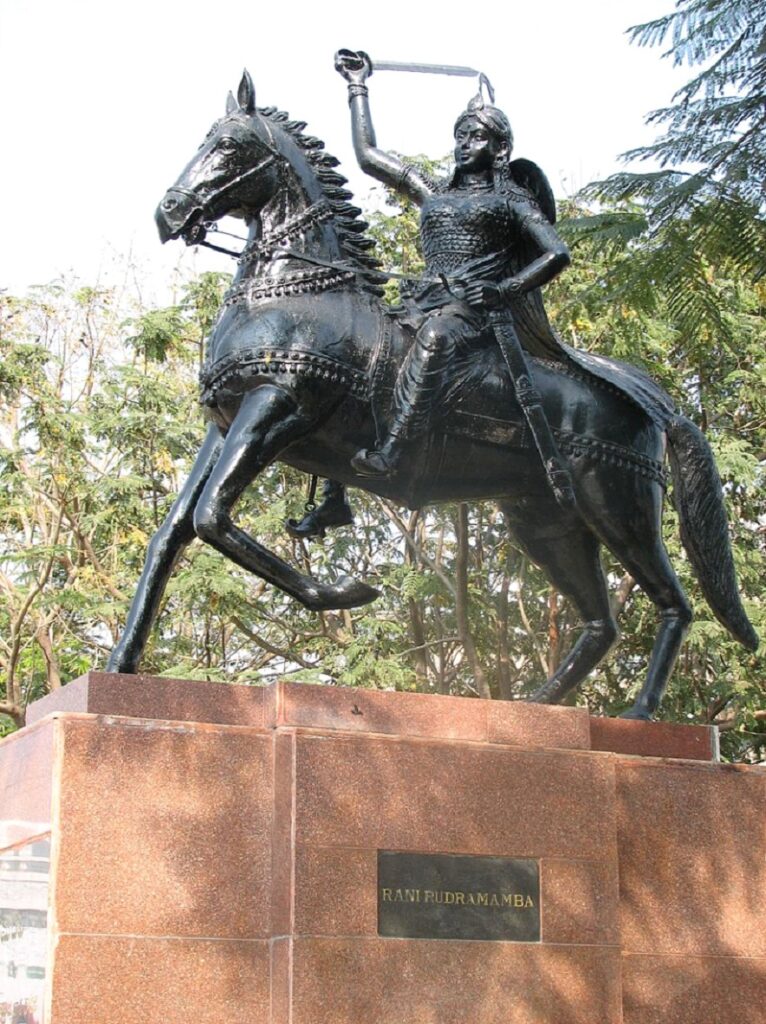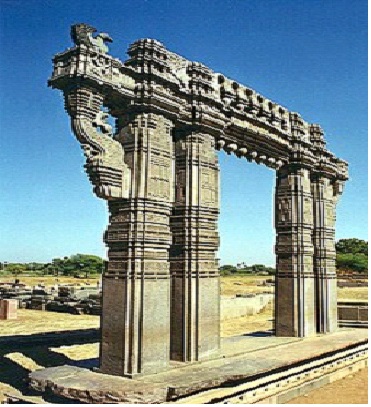The Kakatiya dynasty, ruling from Orugallu (present-day Warangal), significantly influenced Telugu history and culture. They unified the distinct cultures of the Deccan and Coastal plains, fostering a common Telugu identity. Renowned for their architectural achievements and contributions to Telugu society, the Kakatiyas are remembered as key architects of Telugu unity and cultural heritage.
The Kakatiyas – Architects of a Unified Telugu Identity and Cultural Legacy

When one looks at Telugu history and culture, the Kakatiya dynasty who ruled from Orugallu (current day Warangal), have been a major influence. They created a common Telugu identity and culture, paving the way for other Telugu kingdoms to emerge like the Reddy Rajulu of Kondavidu, Rajahmundry, Musunuri Nayakas and above all the Vijayanagara Empire. They unified the distinct Telugu cultures of the Deccan as well as the Coastal plains, and created a common Telugu identity. While the Coastal Delta plains were dominated by Brahmins, the Deccan plateau region had more peasants, warriors, artisans, and the Kakatiyas helped in a bi-directional flow of both influences, resulting in a synergy that made the Telugu culture.
They also shaped Telugu society. Under them, most of the warrior clans were classified under a single identity known as Kapus, meaning protector. Following the empire’s decline, it got split into different communities, like the Velamas, the Reddies (mainly the Panta Kapus, Pakanati Kapus) and the Kammas, after Kamma Nadu, covering Guntur and Prakasam districts mainly. It is these four communities who dominate the Telugu society currently and play a major role in politics too.
Origin
Going by most of the inscriptions, the dynasty got its name from their native village Kakati. However, as per Kumarasvami Somapithin in his 15th century commentary on Vidyanatha’s Prataparudriya, they were named after their family deity Kakati Devi, whose shrine was located in their native village. Krida-Bhiramamu by Vallabharaya also mentions about worship of Kakatamma in Orugallu.
As per Bayyaram tank inscription issued by Ganapati Deva, their chieftain Venna resided at Kakati, which became their dynasty’s name. The Garavapadu charter traces his family ancestry to Durjaya, a descendant of the Chola ruler Karikala Chola, and many ruling dynasties of Telugu land like Velanati Cholas, Haiheyas, Pachedis, claim their descent from him. There have been differing versions of where current day Kakati is located. Some historians claim it to be Kanker in Chattisgarh, while others claim it to be in Karnataka.
While the Kakatiyas never mentioned about their Varna, the ones that do describe themselves as Shudra, like the Bothpur and Vaddamanu inscriptions of Ganapati Deva’s general Malyala Gunda. The Motupalli inscription claims descent from Suryavansha of Rama himself, as does the Malkapuram inscription of Visvesvara Sivacharya, the guru to Kakatiya rulers Ganapati Deva and Rudrama Devi. However, the description of Kshatriya here appears to be more due to them being the ruling class, than their actual varna.
The Mangallu and Bayyaram inscriptions claim the Kakatiyas to be not just vassals of the Rashtrakutas, but also part of their family itself. The Mangallu inscription dating to 956 CE issued by Vengi Chalukya prince Danarnava, names the ancestors of Kakatiya ruler Gunda IV, as Gundiya-Rashtrakuta and Eriya-Rashtrakuta. Again, while some historians claim that the suffix Rashtrakuta-kutumbinah appearing in inscriptions refers to them as officers and vassals of the Rashtrakutas, the early records describe them as Samanta Rajulu(feudatory chiefs).
Garuda was adopted as their royal insignia, as per the Ekamranatha temple inscription of Ganapati Deva and the Palampet inscription of Recharla Rudra, while the Bayyaram tank inscription calls the Kakatiya chief Beta 1 as Garudamka-Beta. This could be due to the fact that the Rashtrakutas and some other Deccan dynasties claimed descent from the Vrishni clan, and so adopted Garuda as their insignia.
The earliest known Kakatiya chief was Venna, who ruled from Kakati, and as per the 956 CE Mangallu inscriptions, the Kakatiyas had come into Telugu land as commanders of Rashtrakuta armies. During Rashtrakuta invasion of Vengi Chalukyas, headed by Krishna II, Gundana III, son of Venna died and Krishna later appointed Gundana’s son Eriya, as a governor there.
Eriya’s grandson Gundana IV, helped Vengi Chalukya prince Danarnava ascend the throne. With the collapse of the Rashtrakutas in 973 CE, he attempted to carve out an independent principality. However he was overthrown by the Kalyani Chalukyas, and his son Garudanka Beta, accepting their suzerainty, received Anumakonda (current day Hanumakonda), which became their capital later. He and his son Prola 1, later took part in many Chalukya campaigns against the Cholas, while Garudanka Beta II, was granted the Vemulawada province. With the decline of the Chalukyas in 12th century, they assumed sovereignity, suppressing smaller kingdoms.
One important event that heralded the rise of the Kakatiyas was the Battle of Palnadu, fought in 1182 AD, between Gurazala and Macherla kingdoms. Basically, the Telugu speaking areas were fragmented into smaller kingdoms like the Haiheyas of Konaseema and Palnadu, Vengi Chalukyas of Nidadavolu, Renati Cholas of Kadapa and the Velanati Durjaya Cholas of Kondavidu. The battle often described as the Andhra Mahabharatam, saw most of these smaller kingdoms destroyed, leading to a power vaccum, into which the Kakatiyas stepped in.
The history of the Kakatiyas can be roughly divided into three distinct phases. The early phase between 1000 – 1158 AD was when the Kakatiyas established themselves in the Telangana region, primarily as feudatory chiefs. This phase coincided with the decline of both the Rashtrakutas and Kalyani Chalukyas. The second phase between 1159-1621 AD saw the Kakatiyas conquer the entire coastal region from Ganjam to Kanchipuram, and bring all the three Telugu speaking regions of coastal areas, Rayalaseema and Telangana under one single empire. The final period between 1262-1322 saw Rudrama Devi and Pratapa Rudra, as also the downfall of the empire, after the Muslim invasions from North.
Gundyana III was the more prominent of the early chieftains, serving under the Rashtrakuta ruler Krishna II, and was the great grandson of Venna. Erriya, his successor was the one who made Orugallu (Warangal) as the capital of the Kakatiyas. With the overthrow of the last Rashtrakuta ruler Karka II by Taila II, and establishment of the Kalyani Chalukyas, the Kakatiyas shifted their allegiance and they got the Annamakonda Vishaya (now Hanumakonda).

Rudradeva was the first sovereign ruler of the Kakatiya dynasty. Till then they had primarily been feudatories under the Kalyani Chalukyas. Ascending the throne in 1158 CE, after the death of his father Prola II, he was initially a vassal of the Chalukyas. But, with their decline, he subjugated other vassals who had broken out in revolt, proclaimed his sovereignty in 1163 CE, and conquered coastal Andhra, defeating several local chieftains. This also led to the decline of the Velanati Chodas. He shifted the capital from Annamkonda to Orugallu, started the construction of the fort there, and also the Rudreshwara Temple, more popularly known as Veyi Stambhala Gudi or 1000 Pillared Temple.

His successor Ganapati Deva would be the longest reigning monarch of the Kakatiyas, and he was the one that brought most of the Telugu speaking regions in Andhra and Telangana under one kingdom. He also had regular battles with the Eastern Gangas for control over Kalinga and Vengi, and supported the Nellore Choda chiefs Tika and Manumasidhi against rival claimants. His father Mahadeva died during an invasion of the Yadava capital, Devagiri, and he himself was held in captivity for some time. During this period Recherla Rudra, the commander in chief of the Kakatiya army, ruled in absentia. It was the same Rudra, who established Palampet and comissioned the building of Ramappa Temple.

Rani Rudrama Devi, the daughter of Ganapati Deva, would be one of the greatest rulers of the Kakatiyas, and a great queen too who ruled from 1262 to 1289 CE. She was born as Rudramba. However, with her father having no male heir, he raised her like a son, and gave her the name of Rudrama Deva. She ascended the throne somewhere in 1296 AD. However many of the feudatories revolted against her, unwilling to accept a woman sitting on the throne.
She subjugated her opponents, recaptured some of the lost territories from the Pandyas, repulsed invasions by the Yadavas, and later Gajapatis. She proved to be an equally wise and able administrator. She started the policy of appointing warriors and officers from outside the aristocracy, a practice that was adopted by Prataparudra and later Vijayanagara Empire too. Her reign saw the rise of many Reddy, Velama chieftains notably Gona Gannareddy and Prasaditya. She also constructed a series of tanks to help the farmers in the arid Telangana region, using an interlinking system, by which when one tank overflows, the excess water would be drained off to another tank, through canals.
Prataparudra was the last great ruler of the Kakatiyas. The grandson of Rudramadevi, he spent the initial years of his reign subjugating the insubordinate chieftains and a series of battles with the Yadavas, Pandyas and Kampili. However his reign ended in ignominy, when he was twice defeated by the Delhi Sultanate, first by Malik Kafur in 1310 and later by Ghiyas-Ud-Din Tughlaq in 1323 that effectively ended the Kakatiya dynasty and resulted in the annexation of the kingdom to the Sultanate.
The fall of Orugallu was as tragic a chapter as that of Hampi. It was raided thrice in 1310, 1318 and 1323, it’s immense riches looted, including the fabled Kohinoor diamond. It’s proximity to the diamond mines of Golkonda nearby made it one of the richest cities of its time, as also it’s grand monuments, the massive fort, and the temples. The Kakatiyas’ control of the entire Telugu speaking region, and the Eastern Coast, enabled the flourishing of trade, resulting in its prosperity. It was but natural that such riches would attract the attention of the Delhi Sultanate.
The fall of the Kakatiyas, would see their feudatories assert themeselves as independent kingdoms, notably the Reddy Rajulu of Kondavidu and the Musunuri Nayakas. The decline of these kingdoms later on would finally lay the foundation for the rise of one of the greatest Hindu empires down South, Vijayanagara, that lasted for four centuries.

Kakatiyas were known for their architecture, basically the Vesara style, primarily influenced from Chalukya style, and combining both the Dravidian style with the Nagara style. Some of their famous temples include the world famous Ramappa Temple, which is now a UNESCO World Heritage site. The Kakatiya Kala Thoranam, which was the symbol of Telangana State emblem, was one of the 4 gates to the Warangal Fort that is now mostly in ruins.
The Kakatiyas in many ways defined Telugu culture, history, and identity, created their own unique architecture style, unified smaller kingdoms into one large empire, built temples, laid down the principles of governance that were adopted by their successors and preserved Sanathana Dharma down South.
Sources
A Social History of the Deccan by Richard Eaton.
Cultural Heritage of the Kakatiyas by S.Nagabhushan Rao.
The Kakatiyas of Warangal by P.V.Parabhrama Sastry.
A Comprehensive History of India by R.S.Sharma
The Early History of the Deccan by Ghulam Yazdani

Leave a Reply